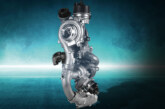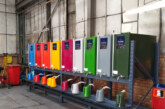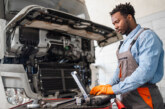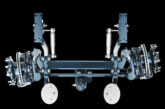How to boost service options

Orbia Fluor and Energy Materials examines how a new economical high performing refrigerant, the R-444A, boosts service options.
A new refrigerant option known as Klea Edge 444A has made its way to UK markets. R-444A has been thoroughly vetted for over a decade and is under consideration for first fill by leading vehicle manufacturers worldwide. As an option for aftermarket vehicle service providers, it boosts A/C system performance at a lower price. So, why should I consider using R-444A over R- 1234yf in vehicle A/C service?
There are four primary advantages:
● Performance: R-444A will cool a vehicle up to four minutes faster than R-1234yf.
● Energy efficiency: R-444A consumes less energy during a typical driving cycle, offering an advantage for those looking to improve the fuel (ICE)or battery(EV) range.
● Cost: R-1234yf being under patent protection, comes with a high price tag. In contrast, R-444A uses common and “public domain” refrigerants for lower relative cost.
● Reliability: R-444A has no known conditions under which it can polymerise. Other refrigerants in the market have shown this scenario, which has led to the clogging of A/C systems and service equipment.
Amid the evolving landscape of vehicle thermal management systems and of regulatory pressure it is worth noting that R-444A meets the F-Gas low GWP requirement with a CO2 equivalence of 93. As for PFAS (poly-fluoroalkyl substances), R-444A breaks down into substantially less trifluoroacetic acid than does R- 1234yf, making it the more environmentally safe choice.
What is R-444A?
R-444A combines R-1234ze (83 per cent), R- 152a (5 per cent), and R32 (12 per cent) to create an azeotropic blend with a 7° K glide, meaning the difference between the lowest and highest refrigerant boiling points. R-1234ze is the base contributing to its low GWP, while R-32 packs the performance and capacity that drives R- 444A performance.
So, what new tools/equipment are needed to service R444A? Initially, R-444A service will be retrofit, or changeover from R-12324yf during a normal service event. An R-1234yf machine will recover and recycle the R-1234yf, while a set of gauges, a vacuum pump and a scale are all that is needed to recharge the system. Recovery/recycling equipment is available to service the retrofitted R-444A fleet.
How to retrofit an R-1234yf vehicle to R-444A
Using certified Refrigerant Recovery Recycling device for the refrigerant to be replaced, remove the refrigerant from the vehicle per proper device operation. Note the amount of oil removed.
The company suggests adapting the low and high side service ports – R-444A ports have been designed and will be available during 2025.
1. Place label for new refrigerant over the current label per local regulations.
2. Complete any needed system repairs.
3. Add specified oil based upon amount removed during recovery, or as prescribed by the refrigerant manufacturer.
4. Using dedicated tools/equipment (may be repurposed from R-134a or R-1234yf) for the new refrigerant, connect to vehicle and vacuum system for 10 minutes.
5. Vacuum leak test for 5 minutes. Continue to (8) if vacuum drops less than 3 in/Hg, otherwise, repeat step 7.
6. Using the same equipment charge vehicle with new refrigerant by 1) pressure or 2) by weight.
By pressure (TXV only): >64-80F (18-27C) charge to 160 psig (11 barg) with A/C system on in fresh air mode and fan on high. At greater than 80-100F (27-37C) charge to 200 psig (13.8 barg).
By weight: Set charging scale to either the R-134a or R-1234YF weight indicated on the J639 label or directed by OEM service information. Charge from virgin R-444A or R-456A cylinder in liquid state. Start vehicle and turn A/C on Max. Observe pressures and ensure center vent temperature meets specification. Close the high side coupler and allow the pressures to stabilise. Close low side coupler and disconnect from the vehicle.









